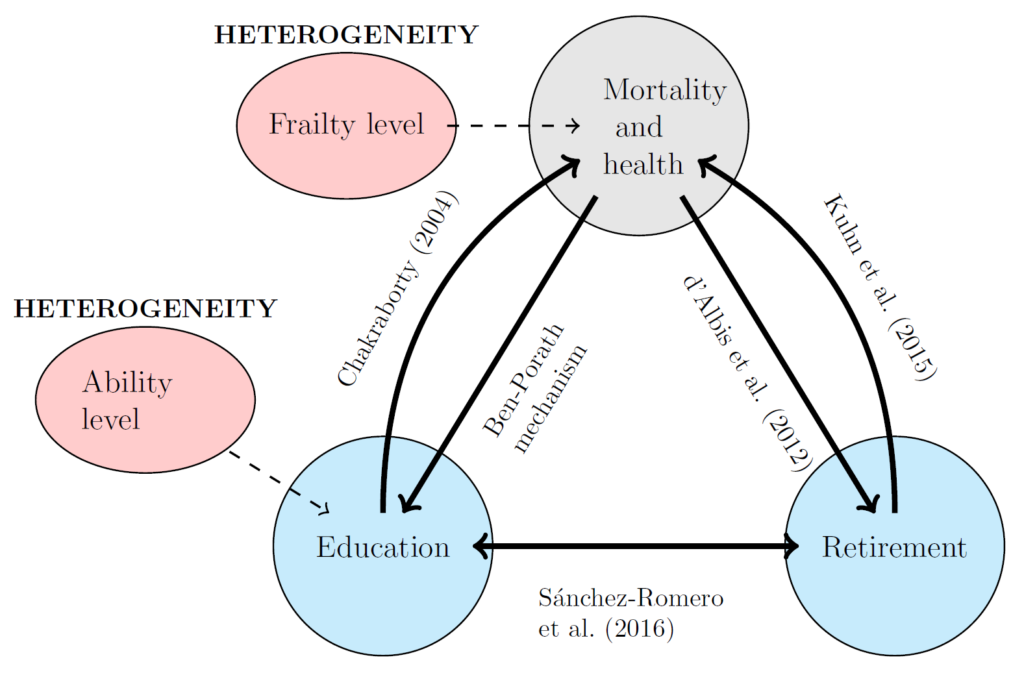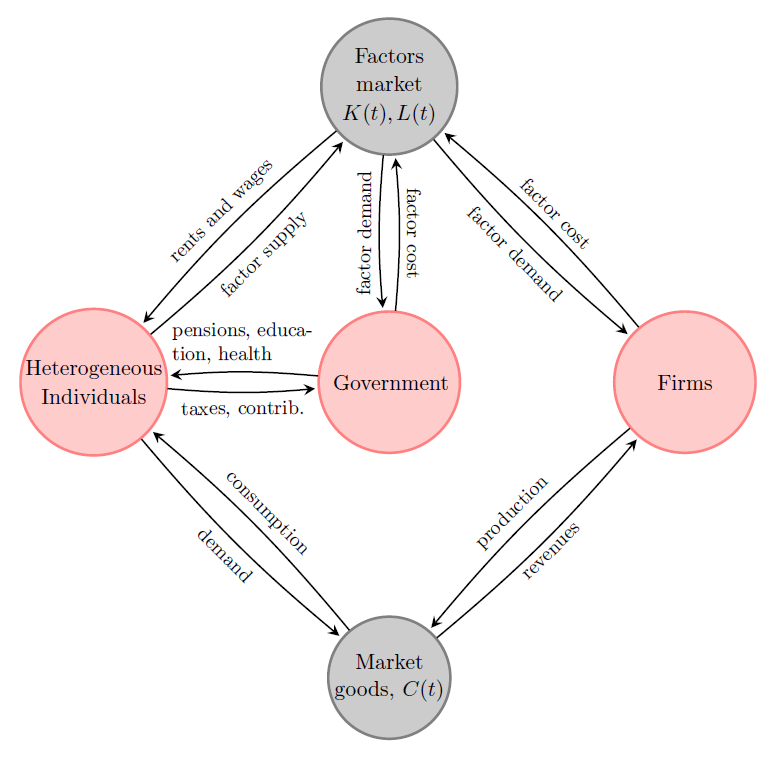Project
To understand the sources of increasing heterogeneity in life expectancy by socioeconomic status we first study the relationship between mortality, education and retirement for individuals with different initial characteristics (such as the ability and frailty level). This first step will help us to understand the process of ageing at the individual level.
Endogenous model of mortality, education and retirement
We set up a standard life cycle model in which individuals choose the length of schooling, the retirement age, a stream of consumption, working time, and health care that maximise their expected utility subject to a lifetime budget constraint, and the appropriate time and boundary constraints. The model is a combination of three theoretical models developed with our co-authors (d’Albis et al., 2012; Kuhn et al., 2015; Sánchez-Romero et al., 2016) as summarised in the following figure. In addition, we assume that individuals are heterogeneous with respect to their ability and frailty level.

In a second step we implement a CGE (computable general equilibrium) model with realistic demography in order to assess the behavioural reactions of our heterogeneous individuals to reforms of the social security system.
General set up of the CGE model
The CGE model allows us to assess how social security reforms will influence the compensation of labour, physical capital, the overall level of education, retirement and life expectancy. The general set up of our CGE model is summarised in the following figure. The model is comprised of three different types of agents: (a) heterogeneous individuals, (b) firms that demand capital and labor to produce goods, and (c) a government that implements taxes and social contributions in order to finance pension benefits and public services (i.e. education and health care). The government will provide health care services by using labour.
